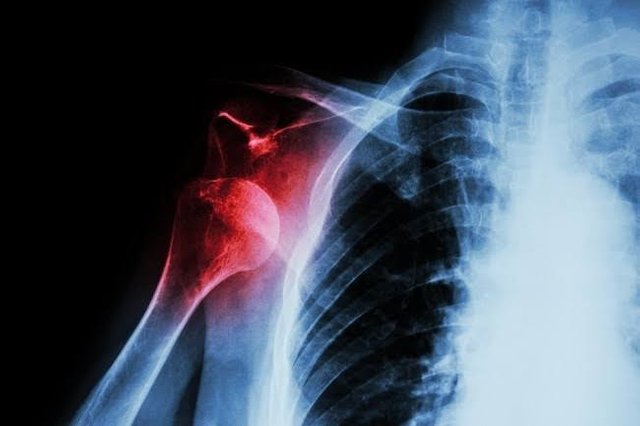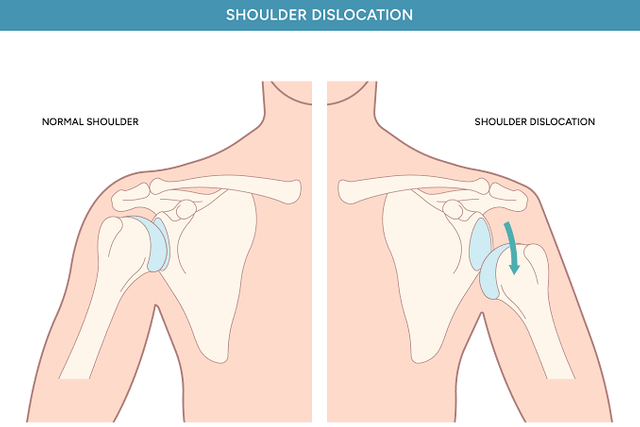Know the Causes, Symptoms, and Treatment of Shoulder Dislocation
Jefri Nichol suffered a dislocated shoulder during his match against El Rumi at 'Superstar Knockout Vol. 3' on Saturday night (August 9, 2025). This resulted in him having to concede defeat to El Rumi midway through the first round.
But what caused Jefri Nichol to dislocate his shoulder? To understand this condition in detail, here's an explanation of the causes, symptoms, and treatment:
According to alodokter, a dislocated shoulder occurs when the humerus of the upper arm bone becomes dislodged from the shoulder joint. This condition is more likely to occur in people with overly flexible joints, the elderly, or those who actively participate in sports.
The shoulder joint can move in various directions, but has a shallow socket. Therefore, it is the most easily dislocated joint.
1.Types of Dislocation
Shoulder dislocations can occur forward, backward, or downward. The most common type is an anterior dislocation, when the upper arm bone shifts forward.
Anterior dislocations usually occur when throwing objects or catching a fall. These movements put significant stress on the shoulder joint.
2.Causes
-Sports such as soccer, volleyball, and gymnastics.
-Traffic accidents that cause a strong impact to the shoulder.
-Falling on the hand.
-Seizures or electric shocks that cause strong muscle contractions.
3.Symptoms
-A bulge around the shoulder.
-Severe pain in the shoulder.
-The arm appears to be out of position.
-Swelling or bruising around the shoulder.
-Difficulty moving the arm.
-Muscle tightness or numbness in the neck, arm, or fingers.
4.When to See a Doctor
See a doctor immediately if symptoms appear after an accident or fall. Every second counts to prevent further damage.
Do not force or massage the injured shoulder. Apply ice for 15–20 minutes to reduce pain and swelling.
5.Diagnosis
The doctor will ask about your symptoms and history of the injury. A physical examination will be performed to confirm the position of the bone.
6.Treatment
Shoulder reduction, or closed reduction, is performed by returning the upper arm bone to its original position. Before the procedure, the patient is given muscle relaxants, sedatives, or anesthesia to reduce pain.
Surgery is performed if the dislocation recurs or tissue damage occurs. This procedure corrects the shoulder position and tightens weakened supporting tissues.
A brace is used to stabilize the shoulder during recovery. The length of use varies from a few days to three weeks, with full recovery typically taking three to four months.
7.Self-Care
Apply ice for 15–20 minutes, 3–4 times a day. Once the swelling has subsided, use a warm compress to relax the muscles.
Rest the shoulder and avoid heavy lifting or movements that trigger pain. Pain relievers such as paracetamol can be used as directed by a doctor.
8.Physiotherapy
Performed after the shoulder has recovered from the initial injury. The goal is to restore strength, range of motion, and stability to the shoulder joint.
With physiotherapy, patients can return to normal activities. Exercises are performed as directed by a therapist or doctor.
9.Complications
Shoulder dislocations can damage the nerves, muscles, ligaments, tendons, or blood vessels around the joint. This damage can impair shoulder function.
A dislocated shoulder is at risk of becoming unstable, making it more susceptible to re-dislocation.
10.Prevention
Exercise regularly to maintain shoulder muscle strength and flexibility. Wear protective gear during contact sports.
Be careful during activities to avoid falls and injuries. Follow a physiotherapy program if you have experienced a dislocation to maintain shoulder stability.
That's my post this time, I hope it's useful for all my stemian friends and thank you.
Regards @nazaroel




